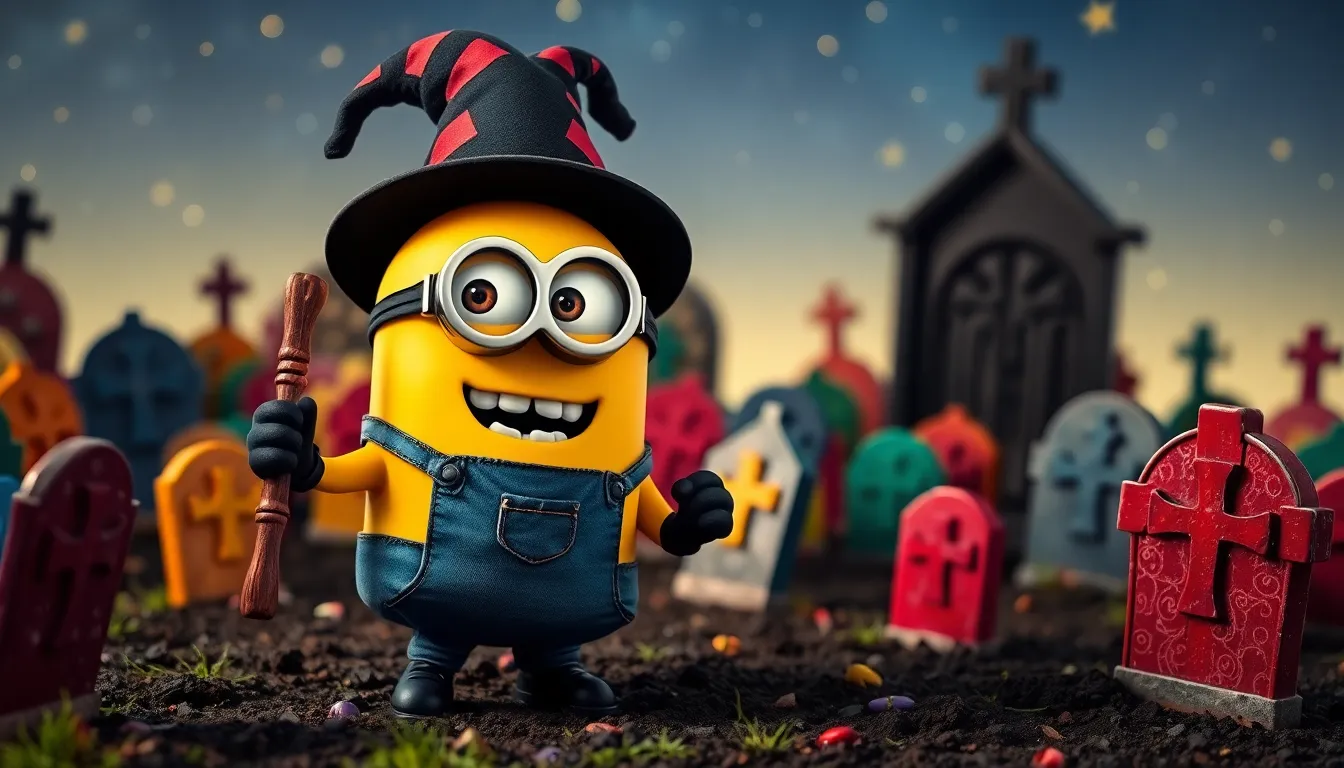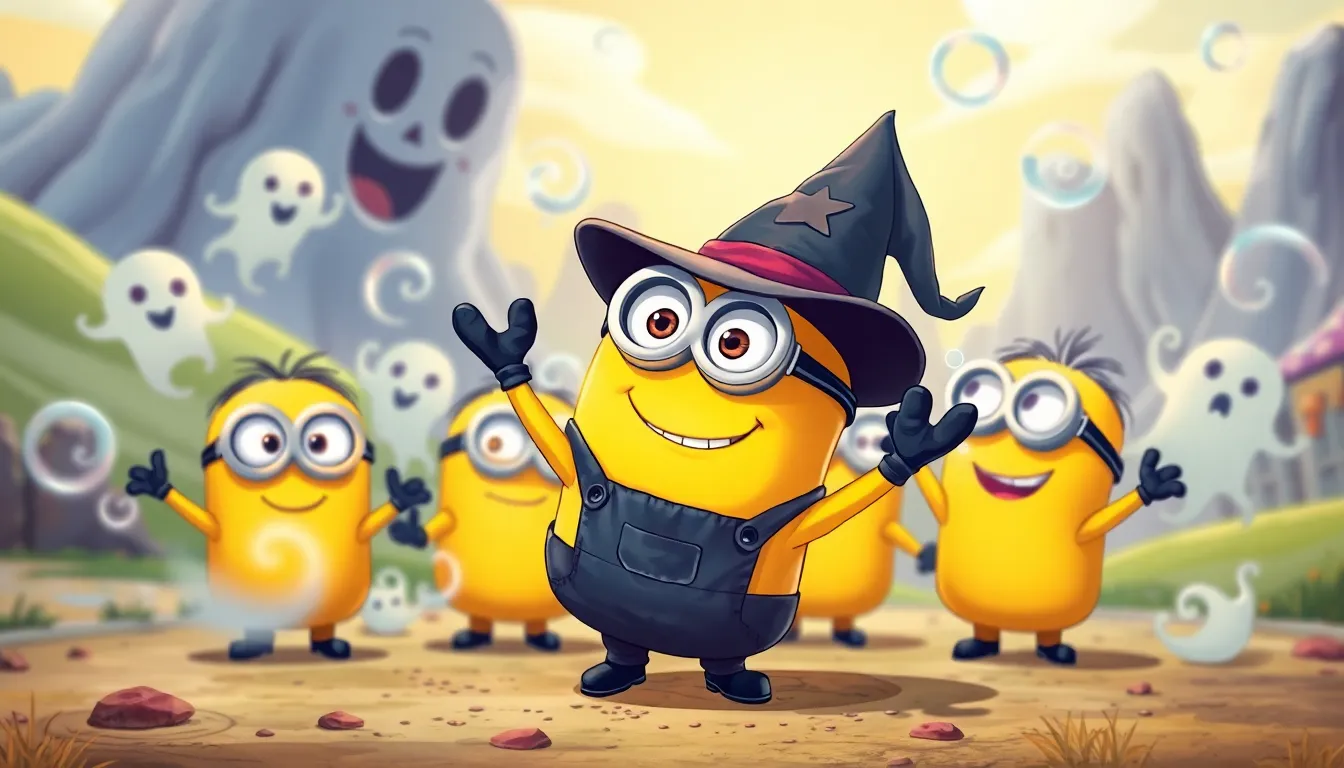In a world where minions are the lovable, banana-obsessed sidekicks, one theory dares to take a darker turn: the Minion Necromancer Theory. Imagine a realm where these cheerful yellow creatures aren’t just up to their usual shenanigans but are also mastering the art of necromancy. Sounds absurd? That’s exactly what makes it fascinating.
This quirky theory suggests that minions could harness the power of the undead, raising an army of mischievous spirits to wreak havoc—or maybe just steal more bananas. With their unique blend of silliness and chaos, minions could redefine the boundaries of what it means to be a necromancer. Buckle up for a wild ride as we dive into this hilarious yet thought-provoking concept that’ll have you questioning everything you thought you knew about these iconic characters.
Table of Contents
ToggleOverview of Minion Necromancer Theory
Minion necromancer theory suggests that minions, typically known for their light-hearted humor and antics, may possess an unexpected penchant for dark magic. This theory posits that these yellow creatures could harness necromancy, creating a delightful blend of mischief and mayhem. By summoning spirits, minions could establish a chaotic army of playful apparitions eager to follow their lead.
The whimsical concept redefines the traditional approach to necromancy. Usually associated with seriousness and horror, necromancy in this context embraces silliness, making it approachable and entertaining. Instead of horrifying imagery, minions bring a cheerful energy, challenging perceptions of death and the afterlife.
Explorations of this theory reveal intriguing implications. It suggests that minions can raise the spirits of past characters, including beloved figures from their own universe. These encounters could create a charming dynamic where celebrated personalities interact with minions, leading to unexpected friendships and comedic exchanges.
Fan interpretations often depict vibrant scenarios, where minions mix spells with their characteristic silliness. For instance, a minion successfully casting a spell to summon playful ghosts adds a comedic twist to the typically serious act of necromancy. This perspective inspires creative storytelling, allowing enthusiasts to envision unique narratives within this enriched universe.
Through this lens, the idea of minion necromancy serves as a bridge between joy and darkness. The playful nature of minions softens the impact of what necromancy represents, making the concept palatable and entertaining for audiences of all ages.
Historical Context

The “Minion Necromancer Theory” offers a fascinating blend of humor and darkness. Understanding its historical underpinnings enriches the exploration of this quirky idea.
Origins of Necromancer Concepts
Necromancy traces back to ancient civilizations, where practitioners sought to communicate with the dead. Believers in these early practices viewed necromancers as powerful figures, capable of accessing knowledge from beyond. In literature, necromancers often appear as dark sorcerers, using magic to manipulate life and death. The film industry further popularized these notions by depicting necromancers wielding terror and control over undead armies. Transformations in cultural perspectives have since shifted necromancy’s portrayal, moving from horror to fantasy elements accessible to broader audiences.
Evolution of Minion Dynamics
Minions evolved as playful sidekicks originating from the “Despicable Me” franchise. Their comedic antics captured audiences’ hearts while providing comic relief. Through various films, minions’ characteristics expanded beyond mere fun to include cleverness and resourcefulness. Their playful nature invites curiosity about darker realms, such as necromancy, cleverly juxtaposing light-hearted humor with darker themes. Fan interpretations often portray minions as mischievous and unpredictable in their involvement with magic. Such dynamics continue to develop, transforming traditional concepts of necromancy into a whimsical narrative enriched by minion charm.
Key Principles of Minion Necromancer Theory
Minion Necromancer Theory combines playful humor with elements of dark magic, offering unique insights into how minions could embody necromantic powers.
Control Mechanisms
Control over spirits represents a core aspect of necromancy in this theory. Minions, known for their charming antics, might wield spells to command mischievous apparitions. By invoking laughter and chaos, they could maintain authority over their ghostly companions. The combination of their whimsical nature and necromantic abilities leads to inventive interactions, showcasing their creativity. Different methods could be employed, such as chanting silly incantations or creating playful rituals to summon spirits. These practices reflect the minions’ unpredictable charm while emphasizing control in a fun, engaging way.
Resource Management
Effective resource management enhances the minions’ ability to conduct necromancy. Energy sources for their spells could include items like bananas or magical artifacts within their universe. Minions might employ clever strategies to gather these resources, mixing humor with ingenuity. Utilizing their playful approach, they may even barter with other characters for mystical items. Channeling energy from surrounding laughter and joy could serve as an alternative resource, transforming ordinary moments into opportunities for summoning spirits. The intersection of resourcefulness and magic embodies the essence of minion necromancy, enriching the narrative while maintaining a light-hearted tone.
Applications in Modern Gaming
Minion necromancer theory finds interesting applications in various modern games. This whimsical concept influences gameplay mechanics and character dynamics.
Popular Games Featuring Minion Necromancers
Several popular games showcase minion necromancers. In “Castle Crashers,” players command lovable minion-like creatures to support their quest. “Stardew Valley” incorporates a necromancer character that raises the dead, bringing charm to the traditional concept. “Heroes of the Storm” presents a minion-raising hero who commands spectral units, blending humor and strategy. Each game demonstrates how this theory creates unique gameplay experiences, allowing players to enjoy a balance of chaos and humor.
Impact on Game Mechanics
Game mechanics benefit significantly from minion necromancer theory. Players experience innovative control systems that allow minion summoning with simple commands. This approach enhances strategy, as players must manage resources like energy or specific items. Additionally, the interaction between minions and their spirits creates engaging visual effects and animations. These elements amplify the fun factor, combining playful interactions with strategic depth. Overall, integrating this whimsical theory enriches gameplay experiences across multiple genres.
Community Perspectives
This section highlights various viewpoints regarding the Minion Necromancer Theory within the community. Fans and critics alike engage in lively discussions that shape the understanding of this whimsical concept.
Fan Theories and Interpretations
Creative interpretations abound in fan circles. Some enthusiasts depict minions raising iconic characters like Gru or even playful spirits from the “Despicable Me” series. Others explore the idea that laughter fuels their necromantic powers, suggesting that humor strengthens their connection with the spirit world. In these fan theories, minions serve as charming conduits between life and afterlife, inviting playful chaos into the realm of necromancy. Imaginative scenarios, such as minions conducting ghostly parades or hosting spirited parties, underline the blend of silliness and supernatural elements that define this theory.
Criticisms and Debates
Debates often arise concerning the Minion Necromancer Theory’s viability. Critics argue that associating minions with dark magic dilutes their innocent nature, potentially alienating devoted fans. Some believe that this playful reinterpretation strays too far from traditional concepts of necromancy, which often emphasizes serious themes. Others question whether the blending of humor and necromancy undermines the weight of its address to life and death topics. Such discussions underscore the tension between maintaining minions’ cheerful essence and exploring darker themes that the theory introduces.
The Minion Necromancer Theory opens up a playful yet thought-provoking dialogue about the nature of beloved characters. By blending the whimsical essence of minions with the darker elements of necromancy, it invites fans to explore new dimensions of humor and chaos. This unique perspective not only enriches the narrative surrounding minions but also encourages creativity in gaming and fan interpretations.
As discussions continue within the community, the balance between light-heartedness and darker themes remains a captivating topic. Ultimately, this theory serves as a reminder that even the most cheerful characters can embrace complexity, making them relatable and engaging for audiences of all ages.




